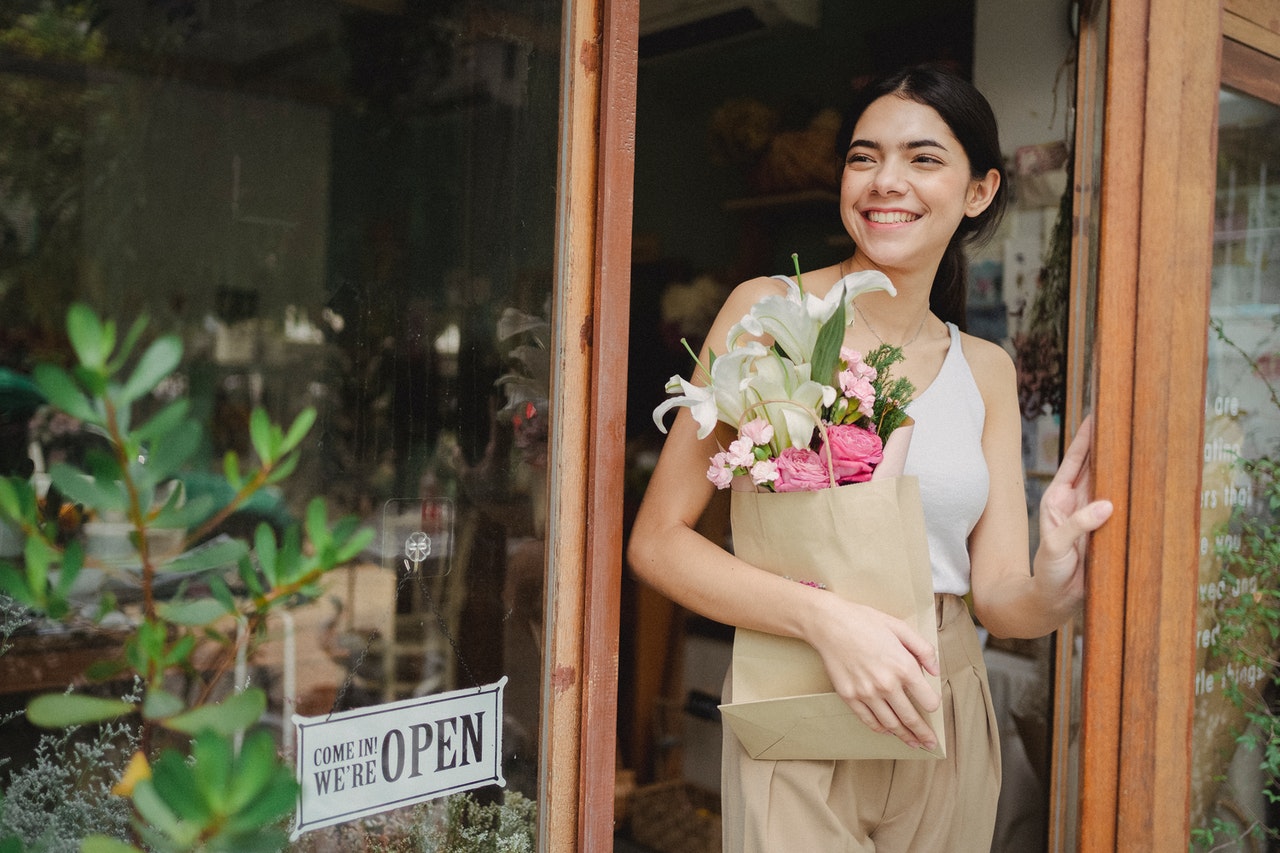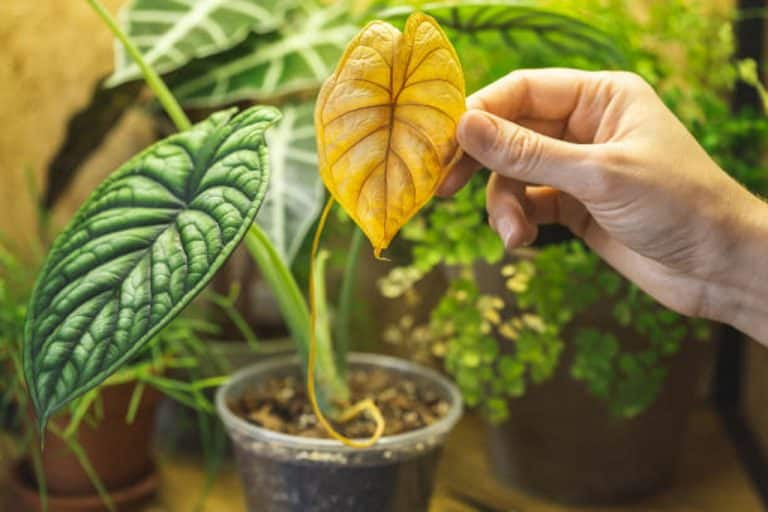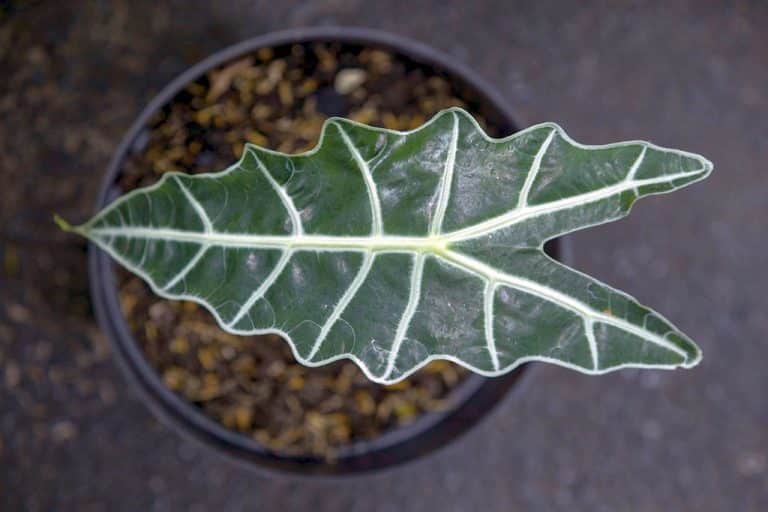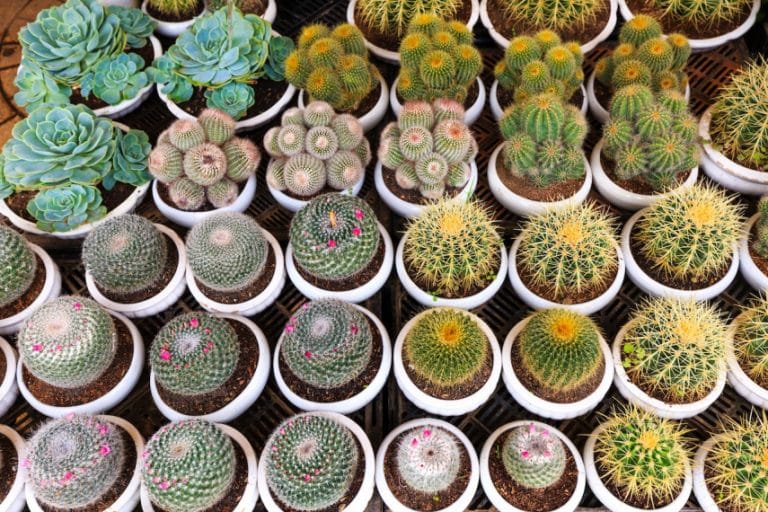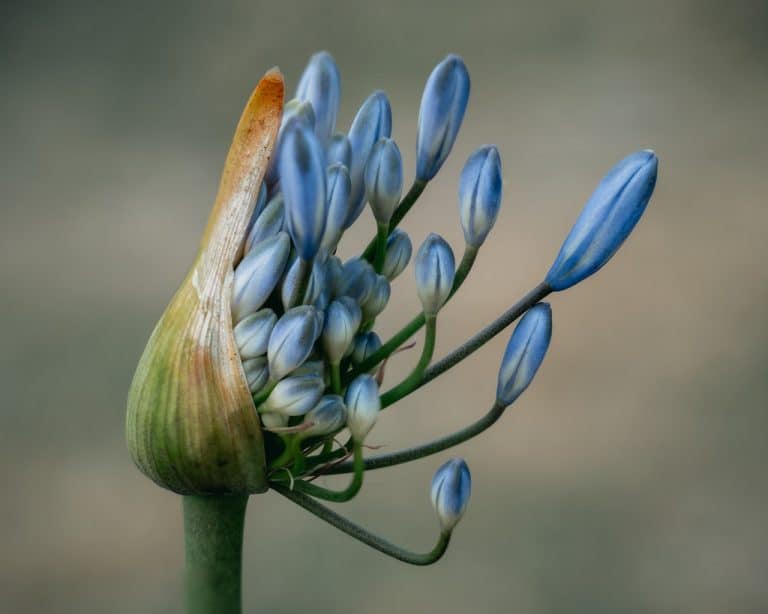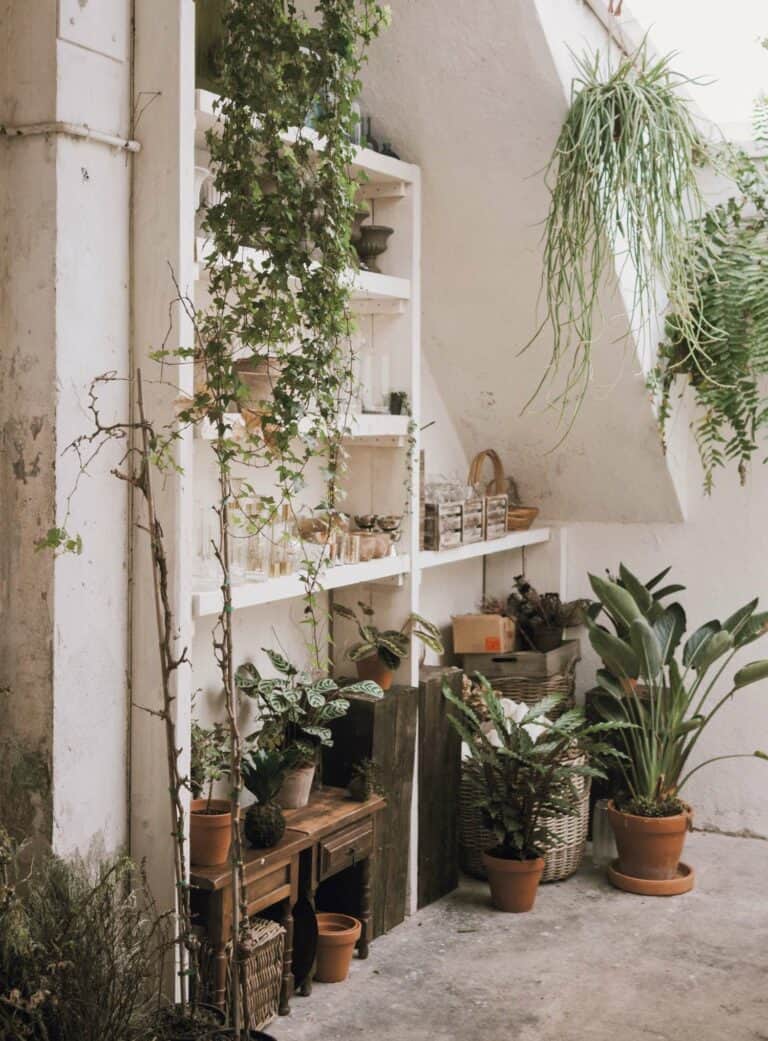Top 12 Best Bulbs, Corms, and Tubers to Grow Indoors
FAMILY: GESNERIACEAE ORIGIN: CENTRAL AND SOUTH AMERICA
ACHIMENES, CUPID’S BOW, HOT WATER PLANT, MAGIC FLOWER, ORCHID PANSY
THERE IS AN UNDENIABLE ALLURE to a beautiful blooming plant that grows from tiny rhizomes planted indoors in spring, blooms prolifically from summer to fall on a bright windowsill or shady patio, and then becomes dormant in winter, when space is needed by other plants.
This is the life cycle of achimenes, a relative of African violet that can be grown in hanging baskets or pots, and blooms in colors ranging from rich blues and purples to yellow, salmon, red, and pink.

Plant the dormant rhizomes, which resemble tiny pinecones, in a 3–6 in/7.5–15 cm container in spring. Set them 1 in/2.5 cm deep in African violet potting soil, and keep the container lightly moist at around 70°F/21°C.
Pinch the stem tips when they are 3 in/7.5 cm long to promote branching. Through the summer, grow the plants indoors or out, in a bright location where temperatures range in the 70°sF/20°sC.
Fertilize weekly with a high-phosphorous plant food. In October, allow the plants to dry until the foliage withers to brown.
Gather the rhizomes and store them in bags, padded with a handful of dry peat moss or vermiculite and kept at 60°F/16°C. In spring, discard any rhizomes that are small or shriveled, and replant the rest.
SPECIFICATIONS
Light: Bright filtered light.
Temperature: Nearly constant at about 70–75°F/21–24°C.
Fertilizer: Feed weekly with a high-phosphorous fertilizer while plants are actively growing. Stop feeding in late summer.
Water: Provide as much lukewarm water as needed to maintain constant, even moisture.
Soil: African violet mix.
Repotting: Replant the best rhizomes in spring in fresh soil.
Longevity: Many years.
Propagation: Replanting of rhizomes; rooted stem tip cuttings.
Selections: Grown in hanging baskets, the cascading types are easy and rewarding. Fine varieties include pink ‘Charm’ and blue ‘Blue Monarch’. The best reds are hybrids such as ‘Inferno’ and ‘Scorpio’.
Display tips: Achimenes are spectacular when grown in a hanging basket at eye level.
FAMILY: ARACEAE ORIGIN: SOUTH AMERIC
CALADIUM, ANGEL WINGS

Grow caladiums in summer, when warm temperatures and abundant light prevail. Purchase tubers in spring and plant them in pots, no more than 3–6 in/7.5–15 cm pot; cover tubers with 1 in/2.5 cm of potting mix.
Water well, and set in a warm place, such as atop your refrigerator. Leaves will begin to unfurl in a few weeks, and will get bigger and better as they are exposed to more light and warmth.
Move them outdoors only if temperatures there will not dip below 60°F/16°C at night. If you want to keep plants from year to year, allow the pots to dry until the leaves wither in the fall.
Clip off the old leaves, and then store the pots in a closet or other dark place where temperatures will remain above 55°F/13°C. Repot the tubers in fresh soil the following spring.
SPECIFICATIONS
Light: Bright to moderate light.
Temperature: Warm to very warm (70–85°F/21–29°C) during active growth.
Fertilizer: Feed plants weekly with a high-nitrogen foliage plant food. Caladiums are all leaf, so they benefit from abundant nitrogen.
Water: Keep soil constantly moist, and maintain high humidity.
Soil: Any good potting soil.
Repotting: Move to larger pots if the plants become rootbound during the growing season.
Longevity: Showy season lasts 6 months or more. Tubers can usually be grown in pots for 2 years before they lose quality, evidenced by sparse, undersized leaves.
Propagation: In spring, cut off any sections of root that appear shriveled and dead, and replant the healthy section.
Selections: Dwarf ‘Miss Muffet’ has creamy white leaves liberally sprinkled with red spots. All varieties with ‘Florida’ in their name tolerate cool conditions better than most larger caladiums.
Display tips: Place caladiums where you want to evoke a tropical feel. They are a wonderful way to color up collections of tropical foliage plants.
FAMILY: AMARYLLIDACEAE ORIGIN: SOUTH AFRICA
CLIVIA, KAFIR LILY
FIRST COLLECTED IN 1815, clivia is easy and exciting to grow as an indoor-outdoor houseplant. Plants more than 3 years old can be counted upon to bear clusters of 10 to 20 tubular orange, salmon, red, yellow, or white flowers in late winter.
A top thick, ropelike roots, deep green strappy leaves 2 in/5 cm wide and 24 in/60 cm long persist year round, and the plants get bigger and better with time.
A special temperature regimen is needed to make a clivia bloom, but this is easily accomplished by keeping the plant outdoors in fall during the last month before the first frosts arrive, and then moving it to your coolest indoor room and keeping it rather dry until midwinter.
After this cool, dry rest, a gradual increase in water, coupled with normal room temperatures, leads to a beautiful show of blossoms in February or March.

SPECIFICATIONS
Light: Indoors in winter, moderate light from an east window. Outdoors from late spring to fall, mostly shade with no midday sun.
Temperature: From midwinter to spring, average room temperatures (60–75°F/16–24°C) indoors. In summer, warm temperatures (70–80°F/21–27°C) outdoors. In fall, cool temperatures (35–55°F/2–13°C) outdoors.
Fertilizer: Spring to fall, feed every 2 weeks with a balanced or high-phosphorous plant food. In winter, do not feed.
Water: Spring to fall, keep soil lightly moist. Leach pots in summer to remove accumulated salts (see page 263). In fall and early winter, allow a dry period, watering only enough to keep leaves from wilting. During the second half of winter, gradually increase water.
Soil: Orchid potting mix.
Repotting: Plants like to be root-bound, and need repotting only every 3 years. Use a broad, heavy pot to prevent toppling.
Longevity: 10 to 20 years, or indefinitely when divided every 5 to 7 years.
Propagation: Purchased plants are grown from seed. At home, it is best to cut off the flower stalk at the base when the blossoms shrivel, and propagate clivia by carefully dividing old plants. Young, growing crowns survive repotting better than older ones.
Selections: Orange, red, and salmon strains are much more affordable than comparatively rare yellow or white clivias.
Display tips: Celebrate clivia’s bloom season by moving the plant to your most often-used room when the flowers appear.
FAMILY: IRIDACEAE ORIGIN: SOUTH AFRICA
FREESIA
THE SAME SWEET FREESIA FRAGRANCE found in bath and body products can be experienced straight from the blossom when you grow these delightful flowers indoors.
Doing so requires that you mimic the climate in their native home of South Africa — this is not difficult, but it is quite different from the way other blooming bulbs are handled.
The temperature regimen freesias need is easily accommodated by planting them in early fall.

Begin in summer by keeping little freesia corms in a very warm (80°F/27°C) spot for two months, such as atop your refrigerator or hot-water heater.
Plant the conditioned corms in well-drained pots, six to eight to a 6-inch pot. After watering, keep the pots at average room temperatures for a month.
Move them to a cooler (60°F/16°C), brightly lit room for 2 weeks while the buds form. Get them situated in a cool window as the blooms open.
Freesia stems often grow 18 in/45 cm long and need to be taped or staked to hold them upright. After the flowers fade, continue to feed and water the plants until they die back.
Allow the pots to dry completely, gather up the corms, and repeat the cycle.
SPECIFICATIONS
Light: Bright light from an east or west window.
Temperature: Cool (55–65°F/13–18°C) during their active growth period.
Fertilizer: Feed every 10 days with a balanced or high-phosphorous plant food.
Water: Keep soil lightly moist during the growth period, but avoid overwatering the plants.
Soil: Any well-drained potting soil.
Repotting: Replant yearly, after the annual warm-temperature conditioning period.
Longevity: Several years.
Propagation: When repotting, sort the corms and discard very small ones or those that are old and woody, then replant the healthiest specimens.
Selections: Freesias are available in single- and double-flowered types, in individual colors or mixtures. Those with single flowers are not as prone to falling over as are heavier double-flowered strains.
Display tips: Freesias in full flower will fill a window and perfume a room. If they become too rangy, cut the stems and use them as cut flowers.
FAMILY: AMARYLLIDACEAE ORIGIN: SOUTH AMERICA
AMARYLLIS
A FAVORITE BULB TO BRING INTO BLOOM in winter, amaryllis often are sold in kits that are marketed especially for the Christmas holiday season. These big, dependable bulbs bloom in red, white, or pink, and there are many bicolors.
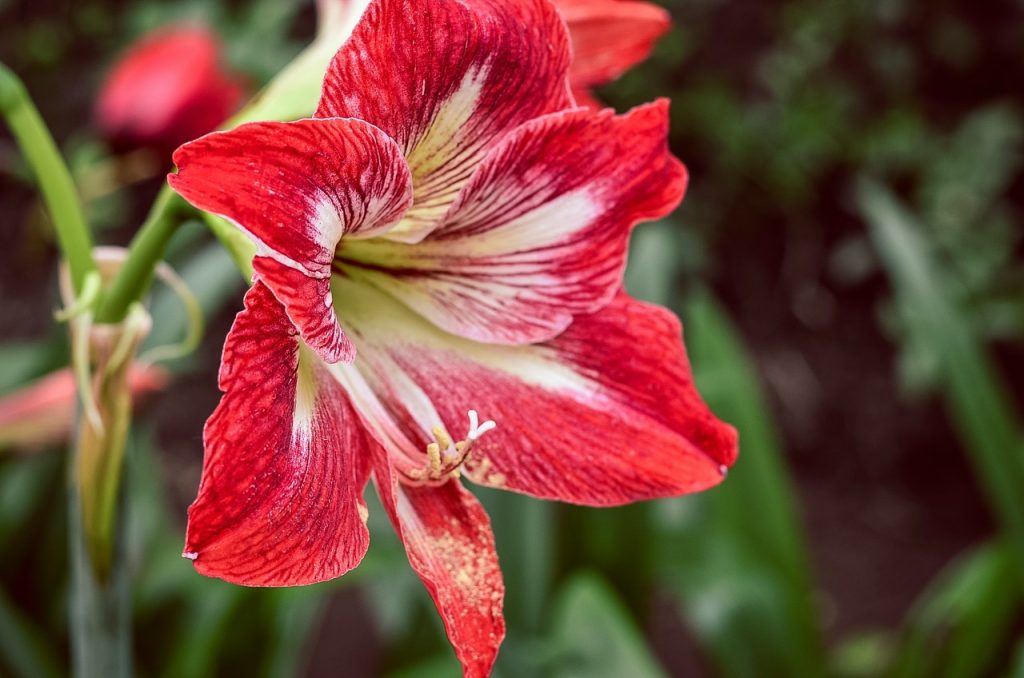
All amaryllis bloom 6 to 8 weeks after planting. Set bulbs in a container that leaves only 2 in/5 cm to spare between the bulb and the pot’s edge.
Good drainage is essential, as is setting the bulb high in the pot, so the top third of the bulb is exposed. Water well and place the planted bulb in a cool (60°F/16°C) place for a month, until a 6 in/15 cm shoot appears.
Then move it to good light and feed it with a balanced fertilizer every 10 days. Most big bulbs produce two flower stalks. After the flowers fade, cut off the stalks and continue to feed and water the plants.
In late summer, allow the plants to dry very gradually. Cut off the old leaves, and let the bulbs rest in a cool (50°F/10°C) place for at least 10 weeks. Repot firm, healthy bulbs 6 to 8 weeks before you want a repeat show of flowers.
SPECIFICATIONS
Light: Bright light during active growth period
Temperature: Cool (55–70°F/13–21°C) during early growth and flowering, followed by warmer temperatures (70–85°F/21–29°C) after the flowers fade.
Fertilizer: Feed with a balanced all-purpose plant food every 10 days.
Water: Keep soil lightly moist during the active growth period. Induce dormancy by allowing the pots to gradually dry out in midto late summer.
Soil: Any good potting soil, or a three-way mixture of peat moss, sand, and potting soil.
Repotting: Replant each year in winter, after bulbs have rested for 10 to 15 weeks.
Longevity: Several years.
Propagation: Very vigorous varieties may produce offset bulbs around the mother bulb. Allow these to remain attached for two seasons before breaking them off and planting them in their own pots.
Selections: Pale pink and white ‘Appleblossom’ is an old favorite. ‘Scarlet Baby’ and ‘Baby Star’ are more compact and often produce numerous blooms followed by offset bulblets.
Display tips: Tall amaryllis look best when grouped with low-growing foliage plants, so that the dramatic flowers rise from a sea of green.
FAMILY: LILIACEAE ORIGIN: TURKEY
HYACINTH, DUTCH HYACINTH
BEAUTY, FRAGRANCE, AND EASE OF CULTURE have made hyacinths the most popular bulb to grow indoors.
Each bulb produces a robust spike packed with sweetly scented florets, which come in various shades of blue and pink, as well as white, red, yellow, and coral.
Tremendously reliable, an old Persian saying summarizes their allure: “If you have two coins, use one to buy bread, the other to buy hyacinths, for the joy of your spirit.”

To coax hyacinths into bloom indoors, follow the instructions allowing at least 12 weeks of chilling time. Hyacinths can be left out in the cold for much longer, and bringing forced bulbs indoors one at a time helps stretch the bloom season.
You can grow hyacinths in soil, decorative pebbles, or in plain water. Garden gift shops sell hourglass-shaped hyacinth vases that hold the bulb in place while allowing sufficient room for the roots.
Hyacinth flowers last about 2 weeks when the plants are kept in a cool room. Sadly, hyacinths that are forced to bloom indoors never regain their strength and are best discarded after the flowers fade.
SPECIFICATIONS
Light: Bright.
Temperature: Cool (45–65°F/7–18°C) during indoor growth period.
Fertilizer: None required, but a little liquid fertilizer added to water helps to support long-lasting flowers.
Water: After the bulbs begin to grow, water them lightly yet frequently to keep the soil lightly moist. When grown in water, only the roots should be suspended in water.
Soil: Any fast-draining potting soil; hyacinths can also be grown in water, pebbles, or glass marbles.
Repotting: If desired, shift growing bulbs to decorative containers when you bring them indoors in late winter.
Longevity: 6 months.
Propagation: Discard bulbs after they bloom. Buy new ones each fall.
Selections: Choose varieties based on color, such as pink ‘Anna Marie’, blue ‘Delft Blue’, or soft coral ‘Gipsy Queen’. Although less uniform, ‘Festival’ French-Roman hyacinths produce multiple flower spikes from each bulb.
Display tips: Enjoy the fragrance of hyacinths by keeping them in frequently used rooms during the day. To prolong flower life, move them to your coolest room at night.
FAMILY: LILIACEAE ORIGIN: JAPAN
EASTER LILY
THE PURE WHITE BLOSSOMS of Easter lilies signify the sacred side of spring, and they are among the most popular of all blooming house-plants.
Yet they do not naturally bloom in spring, but rather in summer. Greenhouse growers coax them into bloom at exactly the right time by using elaborate temperature, light, and water regimens.

To make sure that a purchased plant keeps its good looks for a long time indoors, choose one that shows only one or two partially opened buds.
When you get the plant home, remove any plastic or foil wrapping that blocks the drainage holes, water as needed to keep the pot moist, and keep the plant in a cool room where temperatures are 60–65°F/16–18°C, especially at night.
When the blossoms open all the way, use a small pair of scissors to snip out the anthers, which prolongs flower life and prevents the scattering of pollen on furniture.
After the blooms fade, Easter lilies can be planted outdoors, where they are hardy to Zone 5. Following a year of adjustment, they normally bloom in early summer when grown outdoors.
SPECIFICATIONS
Light: Bright.
Temperature: Cool to average room temperatures (60–75°F/16–24°C) during active growth period.
Fertilizer: Feed with an all-purpose plant food every 2 weeks if you plan to keep the plant as a garden lily. No fertilizer is needed for plants that will be discarded when their blooms fade.
Water: Water lightly yet frequently to keep the soil lightly moist.
Soil: Most plants are grown in a peaty mix. (Outdoors, plants need excellent drainage and rich, moist soil.)
Repotting: Not needed. (When planting outdoors, set bulbs 6 in/15 cm deep.)
Longevity: 3 to 4 weeks indoors (outdoors, several years).
Propagation: Easter lilies grown in containers become too weak to propagate.
Selections: Seldom sold by variety name. Choose plants based on size and vigor.
Display tips: If you force a few grape hyacinths or other little bulbs, you will stand a good chance of having blooming companions for an Easter lily purchased in spring.
FAMILY: LILIACEAE ORIGIN: ASIA MINOR
MUSCARI, GRAPE HYACINTH
THERE ARE MANY FORMS OF MUSCARI, all of which produce unusual rounded flower clusters on upright stems that resemble elongated bunches of grapes. Most bloom in shades of purple, and there are white forms, too.
The flowers are very slightly fragrant; they often last a month when grown indoors under cool conditions.
Unlike other spring-flowering bulbs, grape hyacinths have a dual life cycle. A few grasslike leaves emerge soon after the bulbs are planted in fall, and more leaves appear with the flowers in spring.
If planted outdoors after they have been forced for one season in a pot, the bulbs become dormant in summer. They then grow a thick tuft of leaves in the late summer which persists well into winter.

White selections need 14 weeks of chilling. Flowers appear about 3 weeks after the pots are brought into warmer quarters. If you have no garden yourself, don’t hesitate to give your tired muscari to a friend who has a place to put them into the ground.
SPECIFICATIONS
Light: Bright.
Temperature: Cool (40–65°F/4–18°C) during active growth period.
Fertilizer: Feed actively growing plants every 10 days with an all-purpose plant food.
Water: Water lightly yet often to keep soil a bit moist at all times.
Soil: Any potting soil that drains well, or a half-and-half mixture of potting soil and sand.
Repotting: Plant out in the garden after blossoms fade, setting bulbs 3 in/7.5 cm deep.
Longevity: 6 months to many years; these are excellent bulbs for naturalizing in the garden.
Propagation: Seldom needed. (Outdoors, very crowded clumps can be dug and divided in summer after the foliage fades.)
Selections: ‘Christmas Pearl’ requires less chilling than other varieties. ‘Valerie Finnis’ has refined pale lavender blooms.
Display tips: Tuck pots into a pretty basket and hide the containers from view with moss or pine needles. Purple muscari look great with dwarf yellow daffodils or white Easter lilies.
FAMILY: AMARYLLIDACEAE ORIGIN: SOUTHERN EUROPE AND ASIA
DAFFODIL, PAPERWHITE NARCISSUS
THE LARGE DAFFODILS that are commonly grown outdoors can be forced into bloom in pots, but smaller selections, such as those found within the N. cyclamenius species, often do a better job of holding their lovely heads high.
They also feature backswept petals that suggest the presence of wind. Mature height is usually less than 12 in/30 cm, though height varies with variety.
Expect the plants to bloom about 4 weeks after the containers are brought indoors. The flowering period lasts 2 to 3 weeks, so if you buy the plants in pots, choose specimens that have not yet begun to bloom.

Paperwhite narcissus (Narcissus jonquilla, Tazetta type) are from warmer regions of Asia, and they need no chilling to promote bloom.
Bulbs begin growing as soon as they are planted, with fragrant blossoms appearing after 3 weeks. Flowers last 2 to 3 weeks, so it’s important to purchase plants that are just beginning to bloom.
Growing paperwhites sold in kits is a good introduction to the art of growing indoor bulbs.
SPECIFICATIONS
Light: Bright.
Temperature: Cool (45–65°F/7–18°C) during the active growth period.
Fertilizer: Feed weekly with an all-purpose plant food when plants are growing.
Water: Keep soil moderately moist at all times.
Soil: Any potting soil, with pebbles added to improve drainage and add weight.
Repotting: Not necessary.
Longevity: 3 months for paper-whites, which are best discarded after they bloom. Miniature daffodils can be shifted to the garden, where they are likely to prosper for many years.
Propagation: Not needed.
Selections: Among little daffodils, yellow ‘February Gold’ is dependable in pots and often persists in the outdoor garden. ‘Jenny’ opens yellow and ripens to pure white. If you find the fragrance of paperwhites too musky for your taste, seek out ‘Grand Soleil d’Or’, which has a sweeter scent. Paper-whites often need staking to remain upright.
Display tips: Slip containers of yellow daffodils into small wicker baskets. With close attention to watering, paperwhites can be grown in damp pebbles in containers that lack drainage holes.
FAMILY: OXALIDACEAE ORIGIN: SOUTH AMERICA
THIS IS ONE OF THE EASIEST flowering houseplants to grow, often producing white or soft pink flowers continuously, except for a brief break in winter. T
he dainty flowers are held above the triangular, clover-like leaves. Oxalis plants do not require a period of dormancy, but if they are forced into one by dryness or an infestation of spider mites, you can cut off all the leaves, repot the bulblike pips, and have a healthy flowering plant in a matter of weeks.

Oxalis is happy to grow in filtered sun indoors year-round, or you can move it outside to a shady patio or balcony in the summer. Good light intensifies the leaf colors with strains of burgundy or variegated leaves. Very hot, humid conditions may slow down the production of flowers, and low light levels in winter often lead to a short period of no flowers. Oxalis is sensitive to salt buildup in containers, but you can prevent damage to roots by flushing the pots thoroughly with plenty of clean, room-temperature water every 2 months.
SPECIFICATIONS
Light: Bright to moderate year-round.
Temperature: Average room temperatures (60–75°F/16–24°C) year-round.
Fertilizer: Feed plants every 2 weeks with a balanced or high-phosphorous plant food.
Water: Light, frequent waterings are needed to keep large plants constantly moist. Leach pots occasionally to dissolve accumulated salts.
Soil: Any good-quality potting soil.
Repotting: Move plants to larger pots should they become crowded, or when salt deposits accumulate in containers.
Longevity: Many years.
Propagation: This plant can be divided with ease, whether it is in active growth or dormant. Pull apart the roots, dividing a large, 8 in/20 cm-wide mass into three smaller clumps. After repotting, snip off any damaged leaves.
Selections: Many strains have leaves that are green on top and burgundy beneath, but leaves of ‘Triangularis’ are burgundy on both sides. ‘Fanny’ features green leaves with silver margins.
Display tips: The delicate simplicity of oxalis works well with light-colored ceramic containers.
FAMILY: LILACEAE ORIGIN: ASIA MINOR
TULIP
OF ALL THE BLOOMING PLANTS you can grow indoors, tulips offer the widest range of color, and even carefully selected mail-order bulbs are quite inexpensive.
You can force any type of tulip, but varieties that grow very tall or produce extremely large flowers often fall over when grown indoors. Triumph tulips seldom have these problems, so they are the favorite type for forcing.

Deep containers help accommodate tulip bulbs’ extensive roots. When buying potted tulips in December and January, look for plants with buds that have not yet opened, and keep them in a cool, well-lighted room.
Warmth makes potted tulips bloom very quickly, and also limits how long the flowers last. Even in a cool room, forced tulips usually hold their blossoms only 2 weeks.
Large-flowered tulips that are forced to bloom indoors are best discarded after the flowers fade, but you may have luck transplanting smaller “species” tulips to your garden when the weather begins to warm in the spring.
SPECIFICATIONS
Light: Bright.
Temperature: Cool (45–65°F/7–18°C) during active growth.
Fertilizer: None required, but a little liquid fertilizer added to water helps to support long-lasting flowers.
Water: Keep soil lightly moist while the plants are actively growing.
Soil: Any clean potting soil, with pebbles added to increase weight.
Repotting: If desired, shift growing bulbs to decorative containers when you bring them indoors. When tulip roots are too restricted, they may fail to flower well.
Longevity: 6 months for large-flowered tulips, which are best discarded after they bloom. (Small species tulips that are transplanted to the garden may persist for many years.)
Propagation: Not needed.
Selections: Triumph tulips are uniform and dependable, growing about 14 in/35 cm tall. Smaller, more long-lived species tulips, such as fragrant T. batalinii and T. humilis, grow to only 6 in/15 cm tall and make fine companions for other spring-flowering bulbs.
Display tips: Make the most of tulips’ formal demeanor by slipping the plants into ceramic or brass containers. To prolong flower life, move blooming tulips to your coolest room at night.
FAMILY: ARACEAE ORIGIN: SOUTH AFRICA
CALLA LILY, ARUM LILY
IN STORES AND FLORAL SHOPS, Easter lilies often share company with lovely potted calla lilies, which bear colorful, cupped, spade-shaped blossoms in pink, yellow, white, rust, and many bicolors.
The flowers usually last 4 to 6 weeks, and many varieties also feature pretty speckled foliage. Callas grown outdoors often reach 36 in/90 cm in height, but those bred for container culture are usually 12 in/30 cm high and wide.
Plants may be brought back into bloom in future seasons provided you give them a dry rest period in late summer. Allow the plants to dry until the leaves wither, clip off the old foliage, and keep the pots very lightly moist in a cool, shady spot.
In winter, a fresh pot of soil, along with warmth, moisture, and bright light, will quickly bring them back to life.

SPECIFICATIONS
Light: Bright.
Temperature: Cool (60–75°F/16–24°C) in winter and spring, warming to moderate (70–85°F/21–29°C) from summer to fall.
Fertilizer: Feed plants every 3 weeks with a high-phosphorous plant food while the plants are actively growing.
Water: Keep soil lightly moist when rhizomes are just beginning to grow. Increase water as plants attain full growth so that roots stay constantly moist. Reduce water in late summer, allowing plants to dry almost completely while they are dormant.
Soil: Any good potting soil that drains well.
Repotting: In early summer, shift newly purchased plants to onesize-larger pots, disturbing roots as little as possible. In subsequent seasons, repot tubers in late fall, smooth side down, before coaxing them out of dormancy.
Longevity: 3 to 5 years.
Propagation: Unless you live in Zones 8 to 10, where callas can be grown outdoors as perennials, discard rhizomes that fail to produce a good show of flowers, and replace them with newly purchased plants or rhizomes. Pot-grown callas usually become weaker rather than stronger after several seasons.
Selections: Choose plants based on flower color and health. Most callas grown in containers are compact hybrids of Z. rehmanii.
Display tips: Clip off stems as flowers fade, and enjoy your calla as a foliage plant for 2 to 3 more months.

